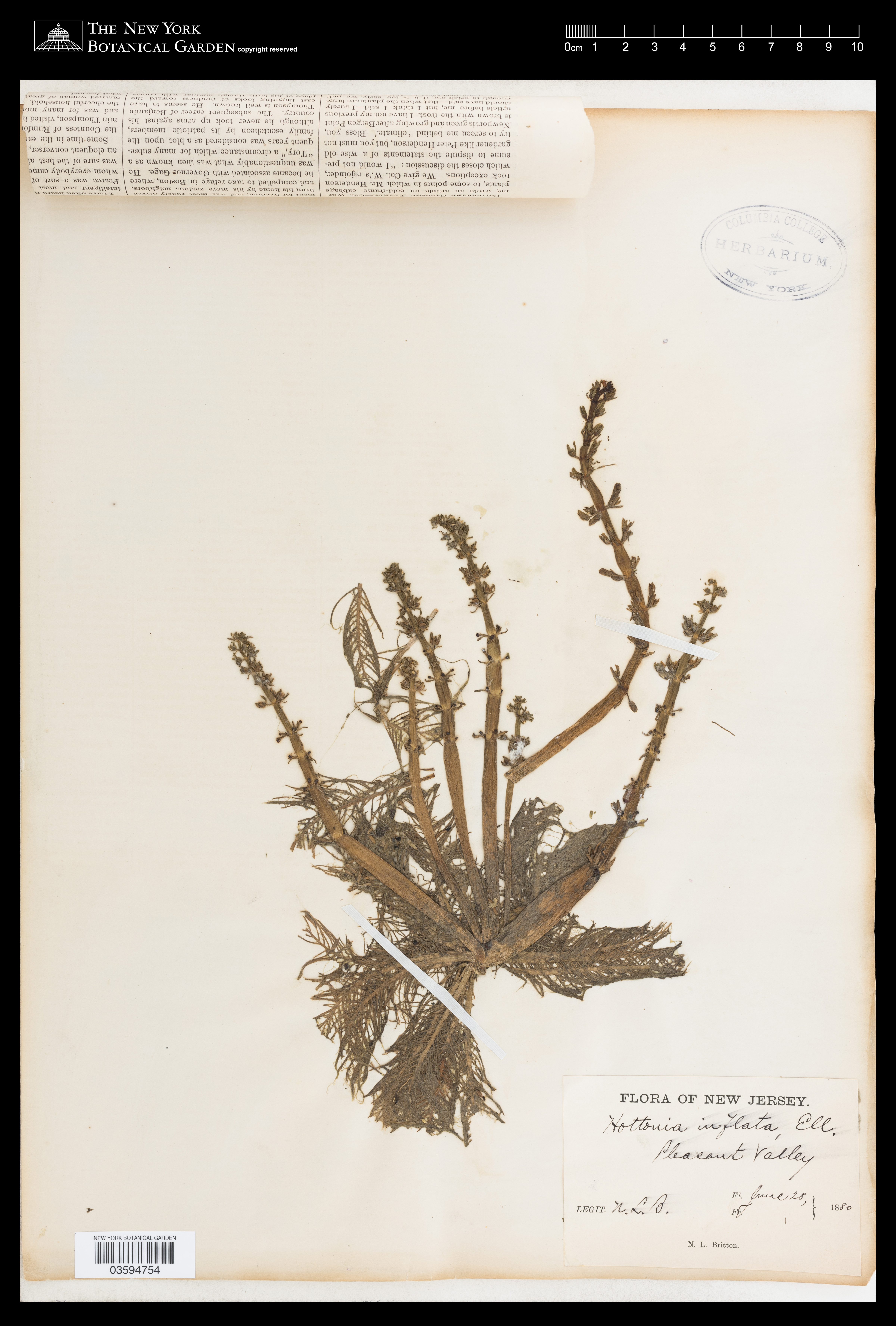Hottonia inflata Elliott
03594754-01.jpg
Rights: Rights reside with creator, otherwise property of NYBG.
-
Filed As
Primulaceae
Hottonia inflata Elliott -
Collector(s)
N. L. Britton s.n., 28 Jun 1880
-
Location
United States of America. New Jersey. Pleasant Valley.
-
Identifiers
NY Barcode: 3594754
Occurrence ID: 14827075-b602-42b2-9b74-c1c0781f7b2d
-
Feedback
-
Kingdom
Plantae
-
Division
Magnoliophyta
-
Order
Ericales
-
Family
Primulaceae
-
All Determinations
-
Region
North America
-
Country
United States of America
-
State/Province
New Jersey
-
Locality
Pleasant Valley
-
Distribution
markets óf New York.' I saw some in the
pver-
Vents
fering
j pre-
soist*'
i has
fcess^;
Sants
.seed
from
fpril,
•nary
osite
been
ants
AMERICAN
be first week in May, but
• was unusually hot and
that our crop of celery
ik was found, on exami-
lin June, to be a partial
pwn as late as tliis before,
i and the experiment was
? again sowed on well-pre*
care-
flower would sell for
AGBICULt^&ES _
or $40 per
[August,
grounds of Mr. Yan Sicklen, of Jamaica, L. I.,
in November of 1870 (which he had protected
from the frost), for which he was receiving $10
per dozen, or nearly $1 each! There is a wide
field ih the South for enterprises of this kind, if
energetically undertaken. All cultivation so
The Water-Violet or Featherfoil.
©’*' ! ., the Water-violet.—{Hottonia infletta.)
re
Wèst way would be to far lias been with a view to get vegetables early,
|say from June'15th to but in my opinion they might be raised in
lit if *n*w«ssful. would [ manvjnstaneés to,better advantage, if grown to
In illustrating as we frequently do our native
plants, we sometimes seleét those subjects that
it is desirable to introduce into cultivation, and
at others plants that are interesting fox their
raritjror curious in their Structure. The Water-
Violet or Featherfoil, Hottonia infletta, is rather
rare, and has a structure
sufficiently peculiar to
¿ommend it to notice.
The name Water-Violet
ÌS likely to . mislead, as
its relationship, to the
Violet is exceedingly re-
mote, iit really belonging
to the Primrose Family.
The plant, as Will be seen
by the engraving, is purely
an aquatic, with its leaves
all submerged, and veiy
handsomely divided. It
iS np doubt rooted when
young in the mud at the
bottom of the pond or
pool in which it grows,
but at -flowering time it
appears to be floating.
The flower-stalks form a
symmetrical cluster ; each
is marked with joints,
from which arise whorls
of small white or slightly
bluish flowers. The flow-
er-stems are hollow and
inflated, enabling the plant'
to float; they sometimes
are as large as one’s finger,
and give the plant a strik-
ing appearance. It makes
an interesting plant for
a fresli-water aquarium.
The genus Hottonia was
named in honor of a
Leyden botanist of the
seventeenth century. The
specific name of our
Species, inflata, has re-
ference to the peculiar
character of the flower-
stems. In Europe another
species, H. paluatris, . has
much more showy flowers
than ours, but is .without
the peculiar bladdery
flower-stems. Our speci-
mens came from a pool
near. Hackensack, N.. JV
Although the plant has
been so long known to




Please submit your comments about the specimen:
Hottonia inflata Elliott